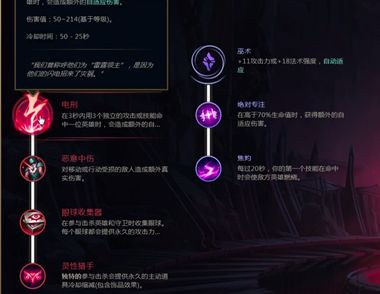How to Auto Include a Javascript File
在这个颜值当道,屌丝闪边的时代,拼不过颜值拼内涵,只有知识丰富才能提升一个人的内在气质和修养,所谓人丑就要多学习,今天图老师给大家分享How to Auto Include a Javascript File,希望可以对大家能有小小的帮助。
Author:Mark Kahn
Many developers have a large library of JavaScript code at their fingertips that they developed, their collegues developed, or that they've pieced together from scripts all over the Internet. Have you ever thought that it would be nice to not have to search through all those files just to find that one function? This article will show you how dynamically include any JavaScript file, at runtime, by simply calling a function in that file!
Here's an example: You have a function foo() in file bar.js. In your code, you know that foo() might be called, but it probably won't be because most people do not use its functionality. You don't want to force the user to download bar.js unless it's going to be used because it's a fairly large file. Here you'll learn how to make a fake foo() function that actually loads bar.js on the fly and then calls the real foo() function.
Dynamically Loading a Script
As many developers know, there are at least two different ways to dynamically load a script at runtime. The first is to create a script object and append it to the document. The second is to use an XMLHTTP request to grab the source code, and then eval() it.
It is this second method that we're going to use, and we're going to exploit the fact that an XMLHTTP request has the capability to completely stall any script activity.
First, some basics: how to create an XMLHTTP Object. There are as many different functions to return a cross-browser XMLHTTP Object as there are developers that work with AJAX. I happen to have my own as well, and here's a simplified example of that:
代码如下:
function getXMLHttpObj(){
if(typeof(XMLHttpRequest)!='undefined')
return new XMLHttpRequest();
var axO=['Msxml2.XMLHTTP.6.0', 'Msxml2.XMLHTTP.4.0',
'Msxml2.XMLHTTP.3.0', 'Msxml2.XMLHTTP', 'Microsoft.XMLHTTP'], i;
for(i=0;iaxO.length;i++)
try{
return new ActiveXObject(axO[i]);
}catch(e){}
return null;
}
Most browsers other than Internet Explorer 5 or 6 have a built-in XMLHttpRequest object. Internet Explorer 7, when it's released, will also have this object natively. The first thing we do is check to see if this object exists. If it does, we create an instance of it and that's it. If the object doesn't exist, we attempt to create one of several ActiveX Objects. We don't know what objects our users have installed, so we attempt to create several different XMLHTTP objects, starting with the newest ones.
Now in order to dynamically load functions, we first need to define them. We could do this one function at a time, but instead of hard-coding dozens of functions, we can choose to just make an object or array with all the file names and the functions you want to have auto-included:
代码如下:
var autoIncludeFunctions = {
'scripts/file1.js': ['function1', 'function2', 'function3'],
'scripts/file2.js': ['function4', 'function5', 'function6'],
'scripts/file3.js': ['function7', 'function8', 'function9']
}
Our autoIncludeFunctions object should contain a list of JavaScript files, as well as a list of functions in those files. Here we are using shorthand JavaScript notation to create both the object and the arrays, but the same thing could be accomplished in many different ways.
These .js files can contain any code you have available, such as JavaScript menus, animations, etc. The simplest example would be a file titled "file1.js" that only contained "function function1(){ alert('Hello, World!'); }".
Note that if any of these files contain functions with the same name as another file, only the last function listed will be used.
To make things a bit easier, we're going to make a function that will pull a JavaScript file down and execute it. It's very important, in our case, that the third paramater sent to the XMLHTTP object be false. This forces the script to wait for the response to download as opposed to continuing on with other code.
代码如下:
function loadScript(scriptpath, functions){
var oXML = getXMLHttpObj();
oXML.open('GET', scriptpath, false);
oXML.send('');
eval(oXML.responseText);
for(var i=0; ifunctions.length; i++)
window[functions[i]] = eval(functions[i]);
}
The loadScript function expects two arguments: scriptpath and functions. "scriptpath" should contain the URL to your JavaScript file, and "functions" is the array of functions that exist in this JavaScript file.
As you can see, the code to pull and execute a script is straightforward. The browser first downloads, and then interprets the JavaScript file. If you've read any other articles on AJAX development, you might remember that in most cases the third argument sent to the open() function of an XMLHTTP object is usually "true." In our case we have it set to "false." This argument controls the state of the XMLHTTP object. If set to true, the object runs asynchrounously, meaning that all other JavaScript code continues while the object is loading. While this is a good thing in many circumstances, if we implemented it here our code would return before our file was done loading. Since we want our code to wait until this file is complete, we set this third argument to false, thus pausing our JavaScript execution until we are ready to continue.
When the code is evaluated from the responseText, it's executed in the limited scope of the loadScript function and because of this, none of these functions will be available outside of the loadScript function. In order do get around this, the for loop adds each function to the window object, thus making it globally available.
It's important to note that only scripts on the same server as the current page can be called in this manner. This is inherent to the XMLHTTP Object and is a necessary measure to increase general browser security.










